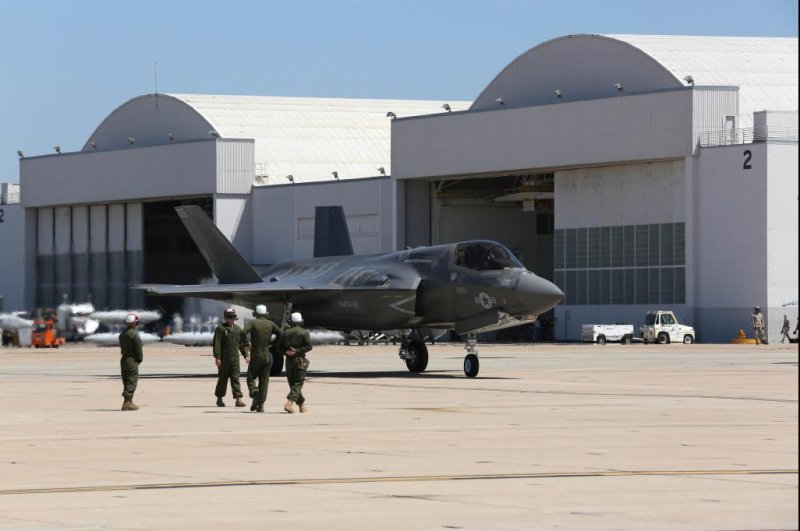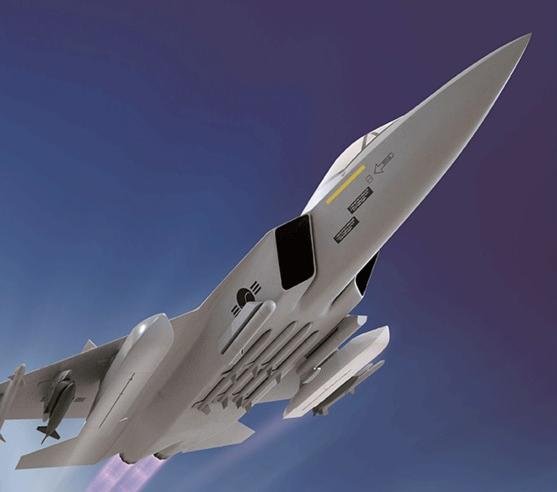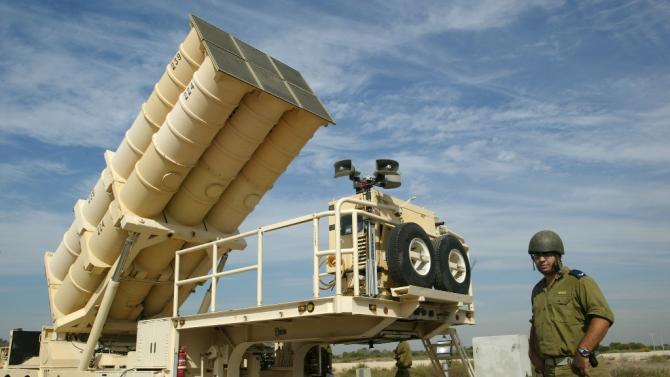http://nextbigfuture.com/
New advances by China on its J-20 stealth fighter diminishes deterrence across the Taiwan Strait, a leading weapons expert in the US said.
“It is crucial that Washington begins to consider Taiwan’s next-generation requirements for air defense,” International Assessment and Strategy Center (IASC) senior fellow Rick Fisher said.
“Given over a decade’s worth of global technology advances, intensive investment and competent program management, it should come as no surprise that China will be the second nation in the world to start production of stealth fighters,” it said.
“The J-20 will give the People’s Liberation Army Air Force a technological advantage over every other Asian air force. While the J-20 may not be able to supercruise [fly at supersonic speeds without using fuel-thirsty afterburners] with its current Russian AL-31 turbofan engines, its high level of strength, long range and electronic warfare capabilities will make it a very formidable foe for other fighters,” it said.
Fisher told the Taipei Times that the status of the J-20’s engine was critical to determining the plane’s superiority to Taiwan’s modified F-16 planes and how soon the J-20 would be competitive with the US’ top-of-the-line fifth-generation Lockheed F-22A.
He said that Washington should now consider a fifth-generation fighter for Taiwan or the provision of advanced engine and electronics technology to allow the nation to produce its own next-generation fighters.
RAND has calculated that the US would need 2160 (30*72 aircraft in a wing) jets to assure air superiority victory in a simulated 2017 conflict with China over Taiwan.
The United States would have better prospects of prevailing in an attrition campaign designed to defeat a Chinese air offensive over time. Nevertheless, PLA Air Force modernization has made such a campaign more challenging. The number of wings required is shown as medium-shaded bars (seven days) and dark-shaded bars (21 days). Even in the attrition case, the United States would face increasing difficulty meeting its objectives in 2017, as more aircraft would be required, and there would be fewer bases to offer safety from Chinese missiles.
The results should be understood in context. China cannot achieve air superiority in any of these cases, and U.S. fighters achieve high kill ratios throughout. Relaxing the 21-day time requirement would reduce U.S. in-theater force requirements to levels that might be supported more easily by the available basing infrastructure. However, until U.S. forces achieve air superiority, the PLA air forces would largely have a free hand in attacking targets in Taiwan. A ground campaign in Taiwan would likely be decided relatively quickly, and the inability of U.S. air forces to achieve air superiority during that time would deprive U.S. and friendly forces of much-needed air support.
Taiwan or the US would need to base or rapidly deploy 200-300 fifth generation jets in and around Taiwan to grind out an attrition campaign in 2017. 400-500 fifth generation jets would likely be needed in 2019 to achieve the same result.
“It is crucial that Washington begins to consider Taiwan’s next-generation requirements for air defense,” International Assessment and Strategy Center (IASC) senior fellow Rick Fisher said.
“Given over a decade’s worth of global technology advances, intensive investment and competent program management, it should come as no surprise that China will be the second nation in the world to start production of stealth fighters,” it said.
“The J-20 will give the People’s Liberation Army Air Force a technological advantage over every other Asian air force. While the J-20 may not be able to supercruise [fly at supersonic speeds without using fuel-thirsty afterburners] with its current Russian AL-31 turbofan engines, its high level of strength, long range and electronic warfare capabilities will make it a very formidable foe for other fighters,” it said.
Fisher told the Taipei Times that the status of the J-20’s engine was critical to determining the plane’s superiority to Taiwan’s modified F-16 planes and how soon the J-20 would be competitive with the US’ top-of-the-line fifth-generation Lockheed F-22A.
He said that Washington should now consider a fifth-generation fighter for Taiwan or the provision of advanced engine and electronics technology to allow the nation to produce its own next-generation fighters.
RAND has calculated that the US would need 2160 (30*72 aircraft in a wing) jets to assure air superiority victory in a simulated 2017 conflict with China over Taiwan.
The United States would have better prospects of prevailing in an attrition campaign designed to defeat a Chinese air offensive over time. Nevertheless, PLA Air Force modernization has made such a campaign more challenging. The number of wings required is shown as medium-shaded bars (seven days) and dark-shaded bars (21 days). Even in the attrition case, the United States would face increasing difficulty meeting its objectives in 2017, as more aircraft would be required, and there would be fewer bases to offer safety from Chinese missiles.
The results should be understood in context. China cannot achieve air superiority in any of these cases, and U.S. fighters achieve high kill ratios throughout. Relaxing the 21-day time requirement would reduce U.S. in-theater force requirements to levels that might be supported more easily by the available basing infrastructure. However, until U.S. forces achieve air superiority, the PLA air forces would largely have a free hand in attacking targets in Taiwan. A ground campaign in Taiwan would likely be decided relatively quickly, and the inability of U.S. air forces to achieve air superiority during that time would deprive U.S. and friendly forces of much-needed air support.
Taiwan or the US would need to base or rapidly deploy 200-300 fifth generation jets in and around Taiwan to grind out an attrition campaign in 2017. 400-500 fifth generation jets would likely be needed in 2019 to achieve the same result.

Pakistan eyeing deal for U.S. F-16 jets By Ryan Maass | Dec. 31, 2015 at 9:33 AM

Pakistan's fighter fleet includes over 70 F-16s, and additional
French and Chinese attack aircraft. U.S. Air Force photo by
Master Sgt. Roy Santana
ISLAMABAD, Dec. 31 (UPI) -- The government of Pakistan is in the process of securing a deal with the U.S. government for the delivery of new F-16 fighter jets.
The deal was discussed by Pakistan Air Force Air Chief Marshal Sohail Aman, who confirmed to local media outlets at the Pakistan Aeronautical Complex that officials are in talks. The announcement came during the rollout ceremony of the 16th JF-17 Thunder aircraft.
"We are in talks with U.S. defence officials to get some latest F-16s but the deal may take some time," Aman said.
Aman did not disclose the number of aircraft to be procured. Pakistan's Air Force already includes over 70 F-16s, in addition to dozens of Chinese and French attack aircraft. The United States has been selling the fighters to the country since the two governments inked a deal in the 1980s.
While U.S. lawmakers have been critical of arms sales to Pakistan, Defense News reports there is an interest in maintaining the relationship to keep the F-16 production line open. With the U.S. Department of Defense moving forward with its next-generation F-35 Lightning II program, which is meant to replace the F-16 fleet, the F-16 program is relying on exports and no longer enjoys domestic demand.
Pakistan's potential procurement of F-16s is part of its effort to modernize its fleet, which includes aging models such as the Mirage III/5. Pakistan hopes to replace its older generation jets by 2020.
Revealed: Israel Wants the Lethal F-35B Stealth Jump-Jet

Israel is considering buying the jump-jet version of Lockheed Martin’s stealthy F-35 Joint Strike Fighter.
The Middle Eastern state has already agreed to buy thirty-three conventional takeoff F-35A model aircraft, but it now wants to buy the short takeoff/vertical landing F-35B variant in case its airfields are damaged during a surprise attack, reports Walla—a Hebrew-language daily. While the report did not disclose how many F-35B jump-jets might be purchased, under the current contract, Israel has the option to buy seventeen more jets.
The F-35B adds short takeoff and vertical landing capability so that it can operate from strips as short as 800 feet. But the F-35B sacrifices range, payload and maneuverability to achieve those aims. Its airframe is limited to 7G, a maximum speed of 630 knots at low altitude and a mission radius of 450 nautical miles—a drop of about 150 nautical miles. It can also only carry two 1,000lbs satellite guided bombs and two AIM-120 AMRAAMs internally, versus the two 2,000lbs weapons the other two versions can carry.
The addition of the F-35B variant—which is currently operational with the U.S. Marine Corps—would also allow Israeli forces to disperse their aircraft to remote locations. Given Israel’s small landmass, dispersing its forces is a logical move because fixed bases can easily be targeted and destroyed—especially as a new generation of low-cost precision weapons begins to proliferate.
While Israel has plenty of state actors like Iran in its neighborhood that might eventually have the capacity to knock out its airfields with precision weapons, a primary concern is instead that a group like Hezbollah might acquire such implements. Indeed, during the 2006 war in Lebanon, the terror group’s sophisticated tactics and use of advanced equipment surprised Israeli forces. Hezbollah fighters were equipped with body armor, night-vision goggles, advanced communications equipment and even advanced Russian-built anti-tank missiles—which damaged (and sometimes destroyed) more than fifty tanks. An Israeli navy ship—Hanit—was even damaged by a Hezbollah-launched Chinese C-802 anti-ship missile. As such, Israel is preparing for a hybrid war.
The U.S. Marines have explored a number of distributed operations concepts for the F-35B which Israel could leverage. Under one Marine Corps concept, a package of F-35Bs and MV-22 would move ashore. A number of F-35B fighters—probably groups of six—would be based at multiple austere airfields. MV-22 Osprey tilt-rotors would support the jets with cargo hauls, aerial refueling and, potentially, airborne early warning—if a new roll-on/roll-off radar is added. The jets would move every few days to complicate enemies' targeting ability.
While the Marines' experience might be beneficial to Israel, the IDF would likely have to develop much of its own concepts for operating the new F-35B. As a land-based power with very different requirements, the Israeli air force has different goals from that of the Marines. But Israel would nonetheless have a good starting point in levering the Marine Corps’ jump-jet expertise to date.
Dave Majumdar is the defense editor for The National Interest. You can follow him on Twitter @davemajumdar.
Image: Lockheed Martin

Crack discovered on F-35 test plane By Ryan Maass | Nov. 17, 2015 at 2:41 PM

Pentagon testers for the F-35C discovered cracks in the main
structural element in a test plane's wing after accumulating 13,700
test hours, roughly equal to 20 years of service according to an
official. U.S. Marine Corps photo by Sgt. Isaac Lamberth.
WASHINGTON, Nov. 17 (UPI) -- Pentagon testers for the F-35C reported a crack on the wing spar of a test aircraft, prompting contractor engineers to formulate a solution.
The cracks were discovered on a heavily tested plane in a main structural element on the C-variant of the Lockheed Martin-made F-35 Lightning II, which is for use on U.S. Navy aircraft carriers. The damage is not expected to affect the current flight operations for any of the variants currently in service for the U.S. military, however the cost of retrofits are not yet known.
"Initial estimates indicate a modification of approximately a half a pound to the aircraft will fix it," Pentagon spokesman Joe DellaVedova told IHS Janes. "Modifications to planes flying today will be incorporated to ensure full life operation."
Defense News reports the F-35C test aircraft sustained the damage during durability ground testing, which involves the application of cyclic loads to the airframe to identify potential problems.
DellaVedova went on to detail the jet in question's rigorous use, saying the plane has accumulated over 13,700 test hours, comparable to about 20 years of a plane's operational military service. All F-35s flying today have about 250 or fewer flight hours logged.
The adjustments made to the cracked test plane will be applied to the rest of the fleet

South Korea to sign KF-X fighter contract next week
By Ryan Maass

The KF-X is a planned multi-role fighter under development by the collaboration between Korea Aerospace industries and Indonesian Aerospace. Concept image by Korea Aerospace Industries.
WASHINGTON, Dec. 24 (UPI) -- South Korea's defense procurement agency will reportedly sign a contract next week with Korea Aerospace Industries to develop its next-generation KF-X fighter
The contract comes as the South Korean government plans to modernize its air defense capabilities, and replace its aging fleet of F-4s and F-5s by the mid-2020s. The KF-X program will support the development of a next-generation multi-role fighter, a cooperative project between Korea Aerospace Industries, the country's only aircraft manufacturer, and Indonesian Aerospace.
Indonesia has pledged to front 20 percent of the bill to fund the project, expected to cost roughly $15 billion. Under the contract to be signed next week, six test planes will be produced by 2025, according to Yonhap News Agency.
The project comes with U.S. support, including the transfer of several jet technologies including electronically scanned radars, electro-optical targeting pods, radio frequency jammers, and infrared search-and-rescue systems.
South Korea will launch a task force for the project in January, comprised of 70-80 defense officials.
Israel successfully tests ballistic missile interceptor
A similar test a year ago failed, but Thursday's trial intercepted a ballistic missile target above the Mediterranean.
"This successful test is a major milestone in the development of the Arrow Weapon System and provides confidence in future Israeli capabilities to defeat the developing threats," Israel's defence ministry said.
"Additional Arrow-3 interceptor tests are planned in the future to demonstrate capability prior to becoming operational."
The Arrow project was first launched in 1988 as part of the then Star Wars programme under late US president Ronald Reagan that was abandoned in 1993.
Arrow 3, developed jointly between the United States and Israel, is intended to serve as Israel's uppermost missile interception system. Lower-altitude interception systems are either already deployed or close to being operational.
Partly financed by the United States, the Arrow system was developed and produced by Israeli Aerospace Industries in partnership with Boeing.
Israel
strongly opposed a nuclear deal struck in July between Iran and major
powers, arguing it would not block its regional rival's path to atomic
weapons.
It also argues that
the lifting of sanctions under the deal will allow Iran to further back
and arm proxy militants in the region.
The
United States said earlier this month it was conducting a "serious
review" into reports that Iran carried out a new round of ballistic
missile testing in violation of UN resolutions.




No comments:
Post a Comment